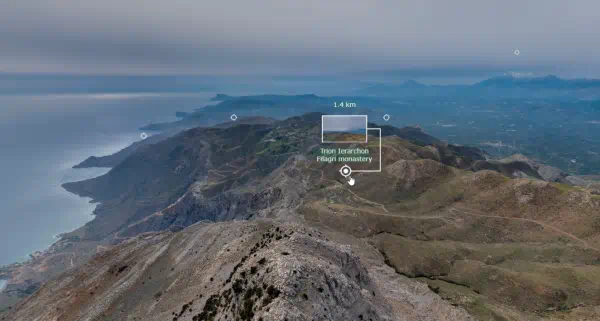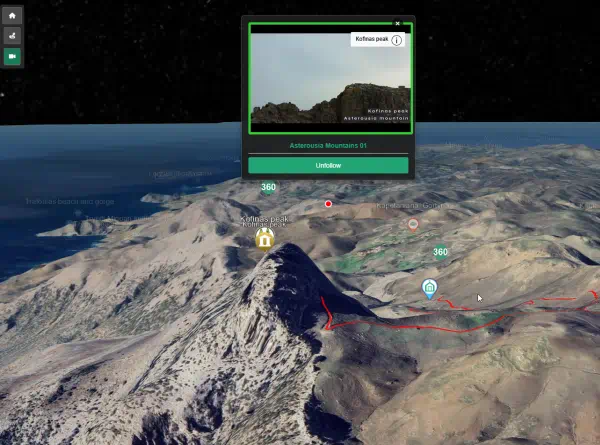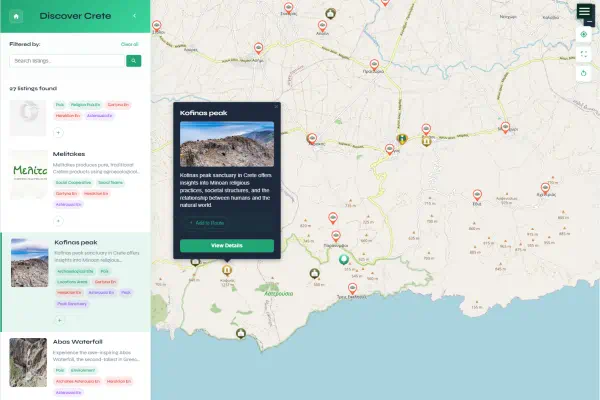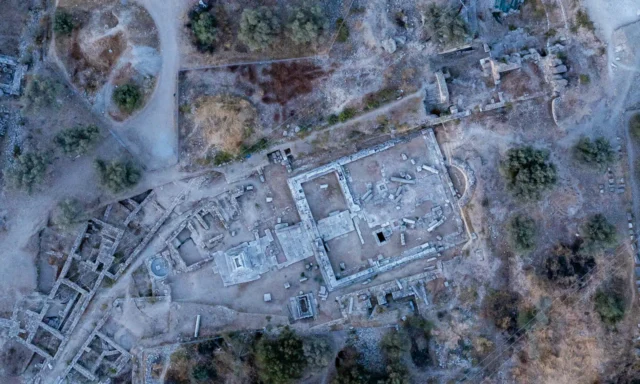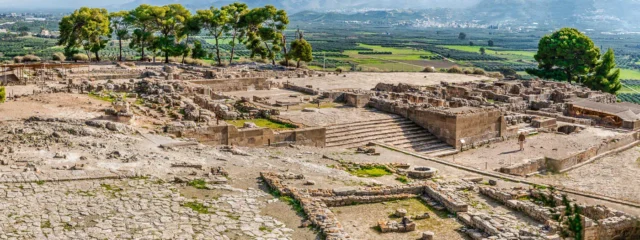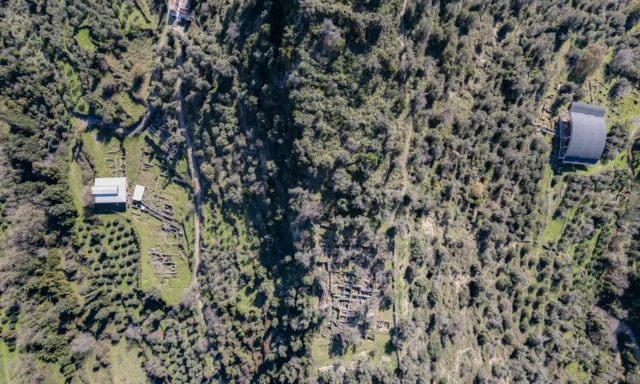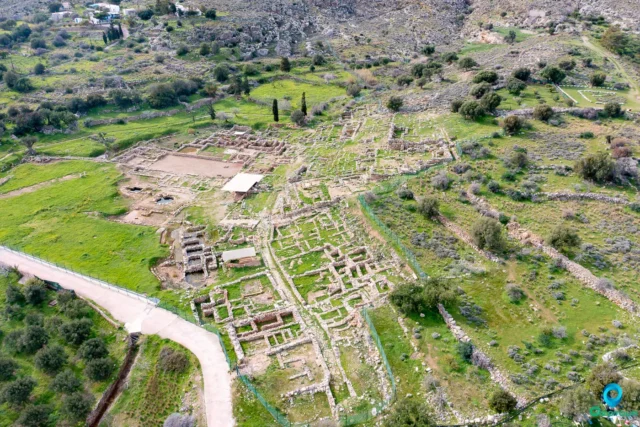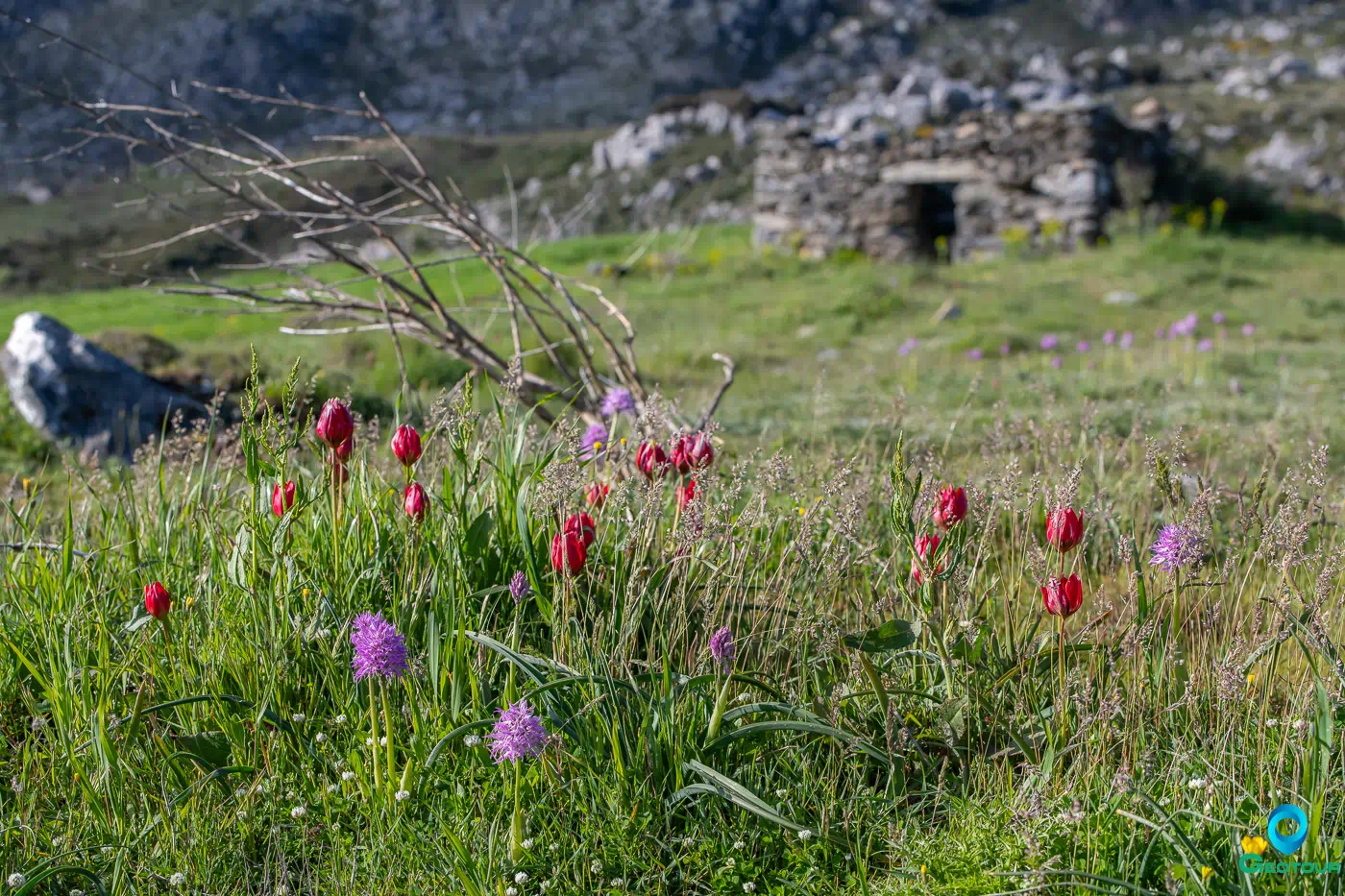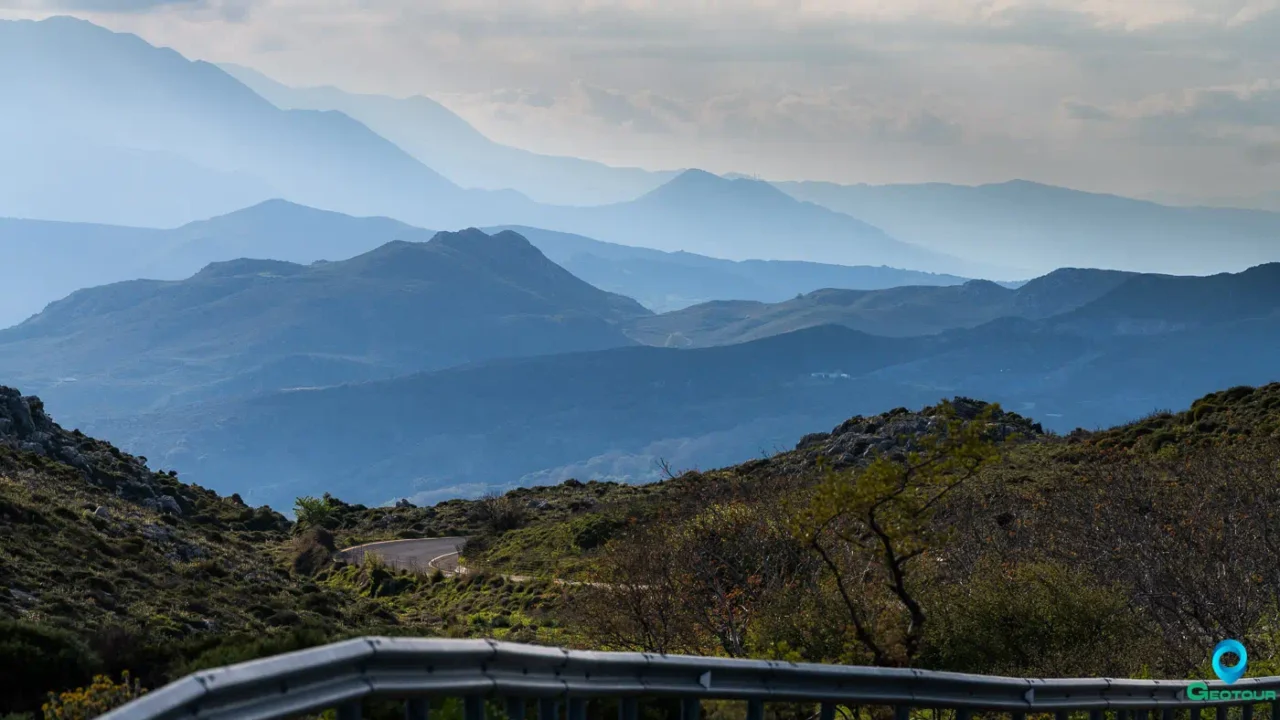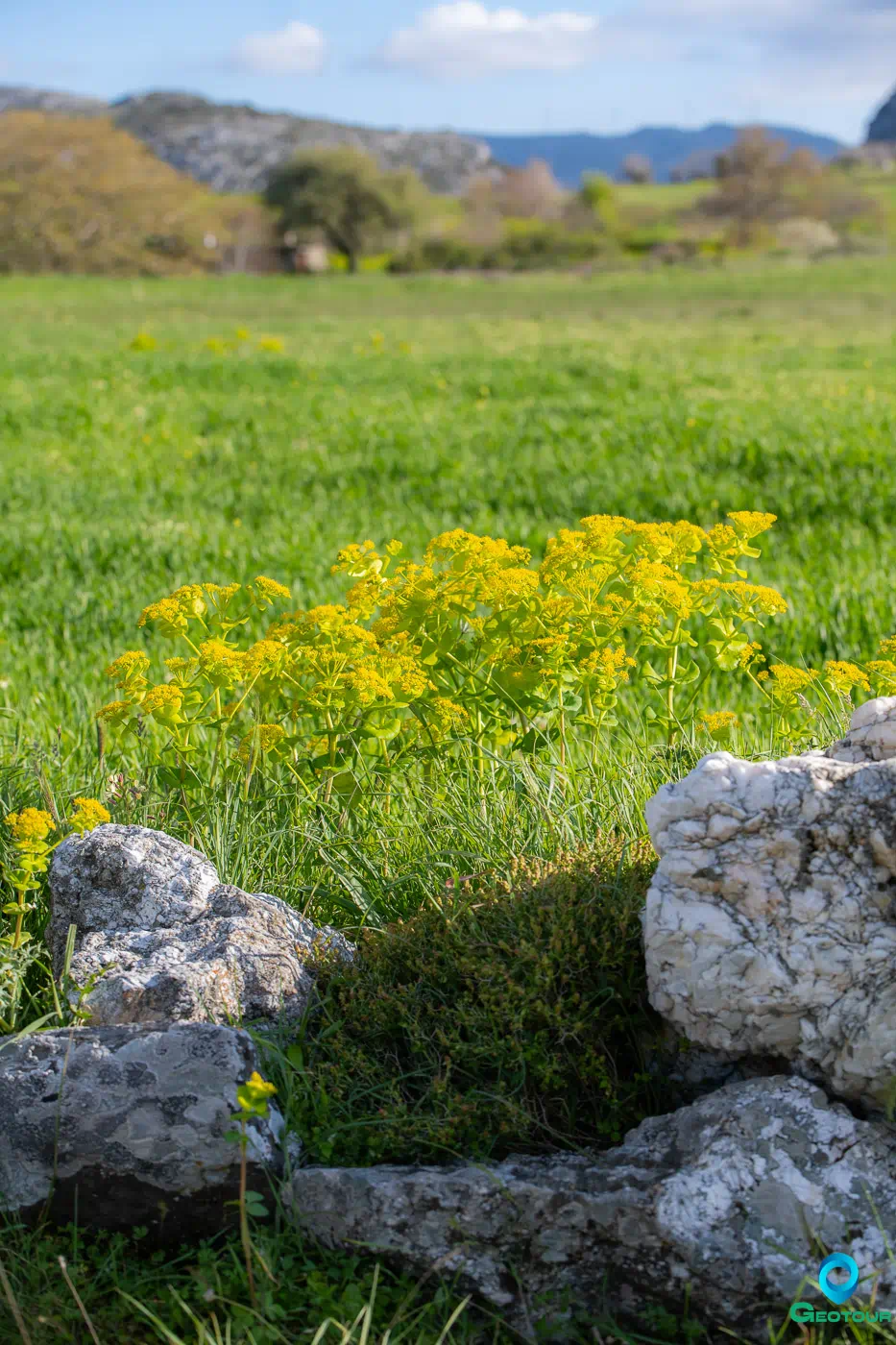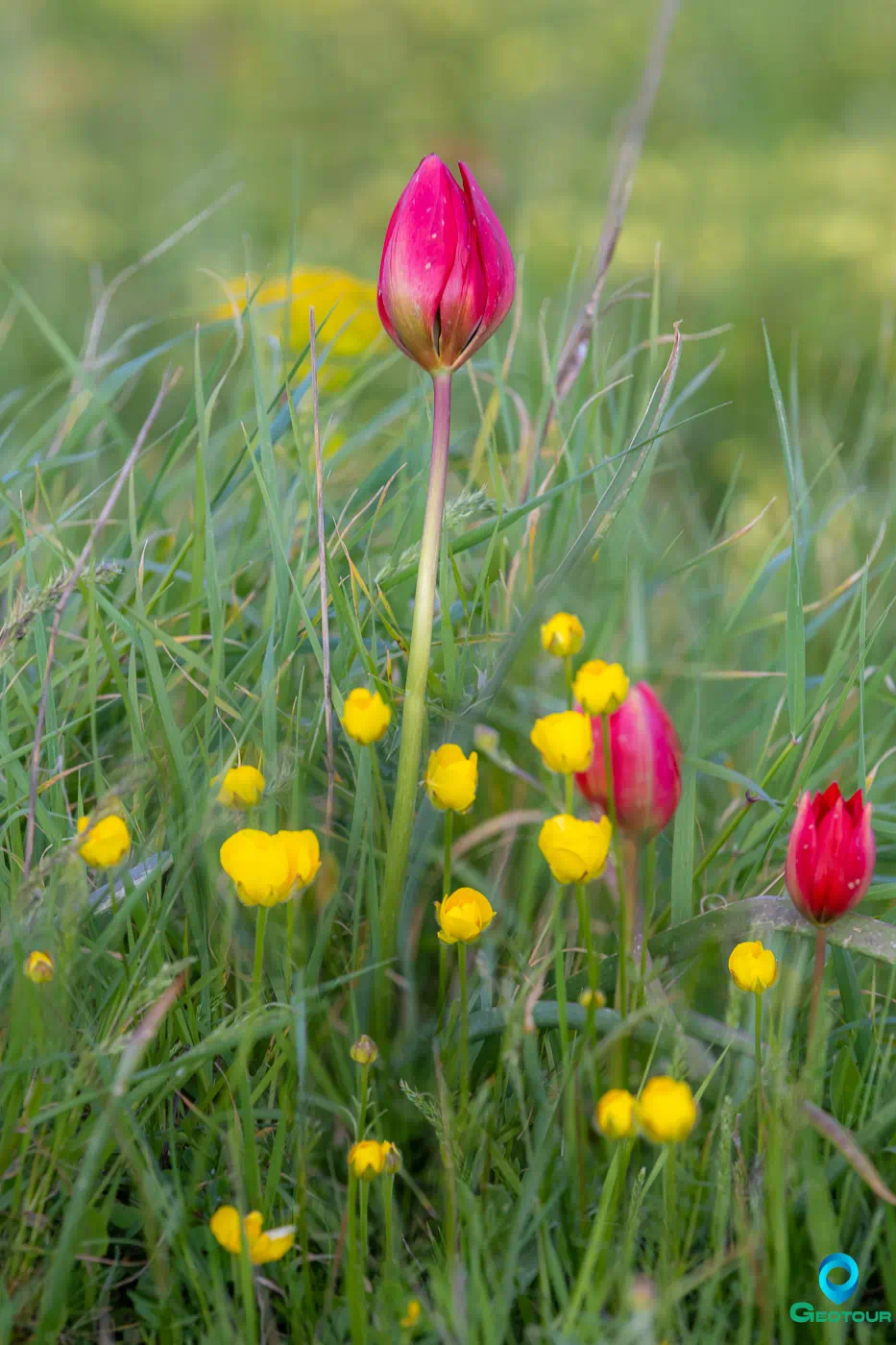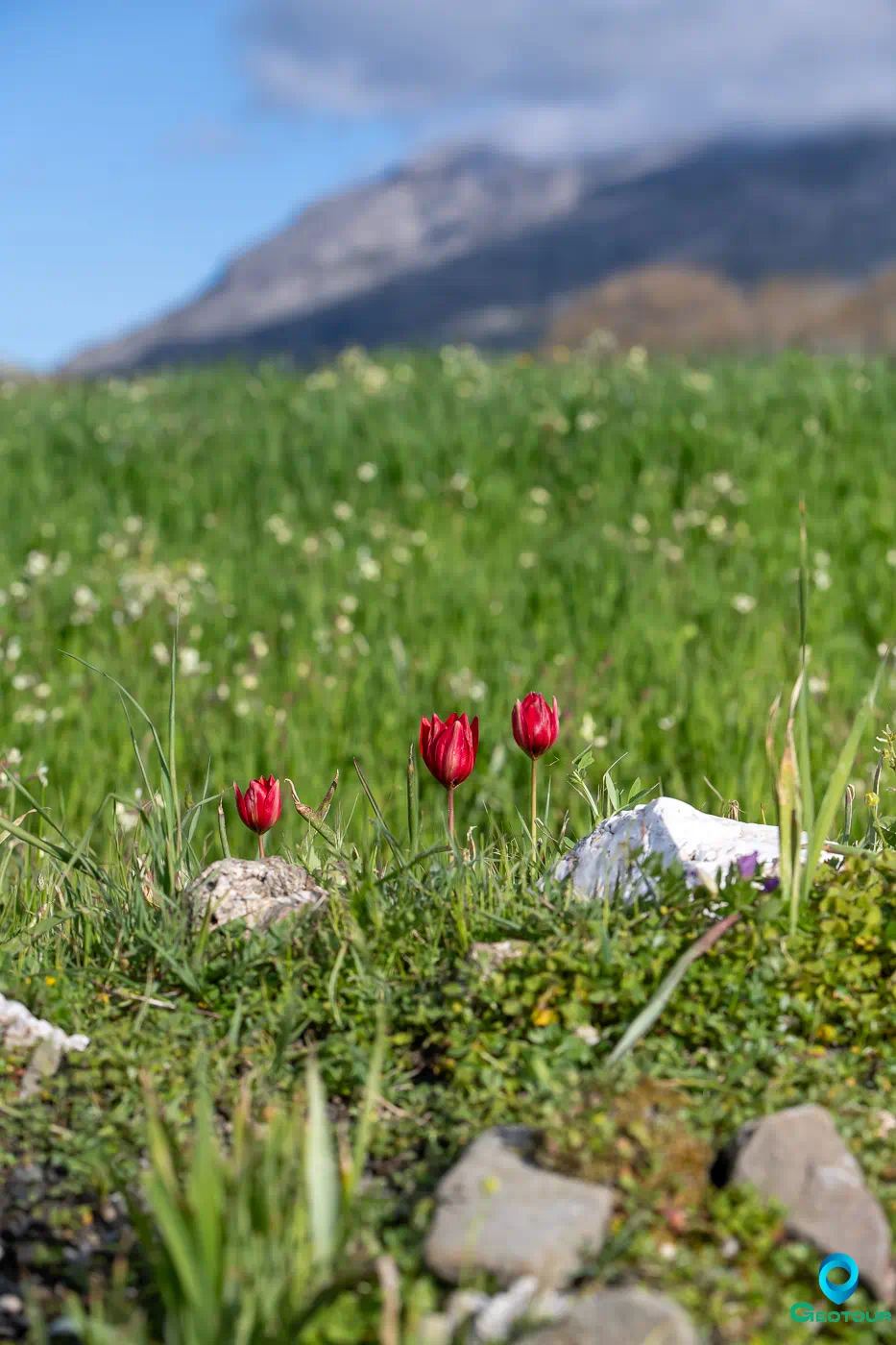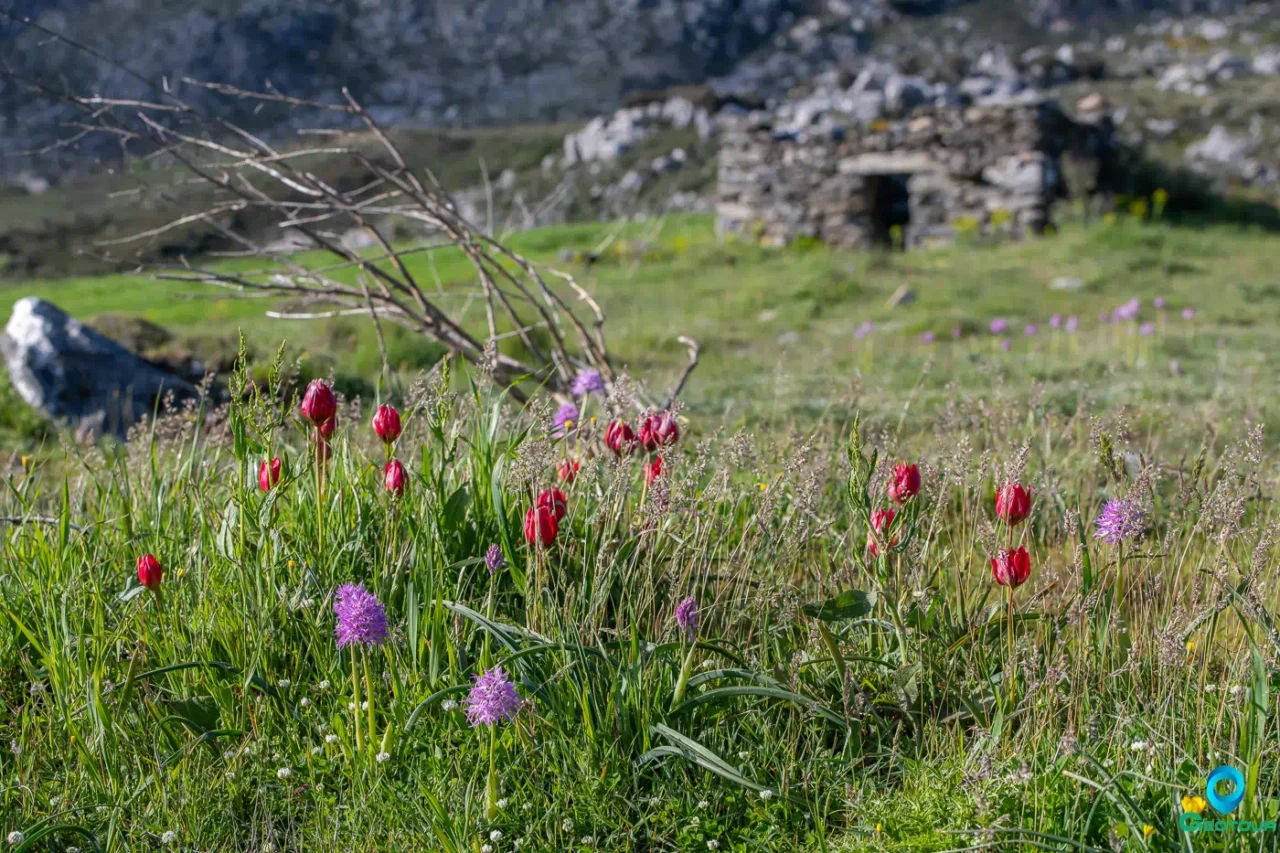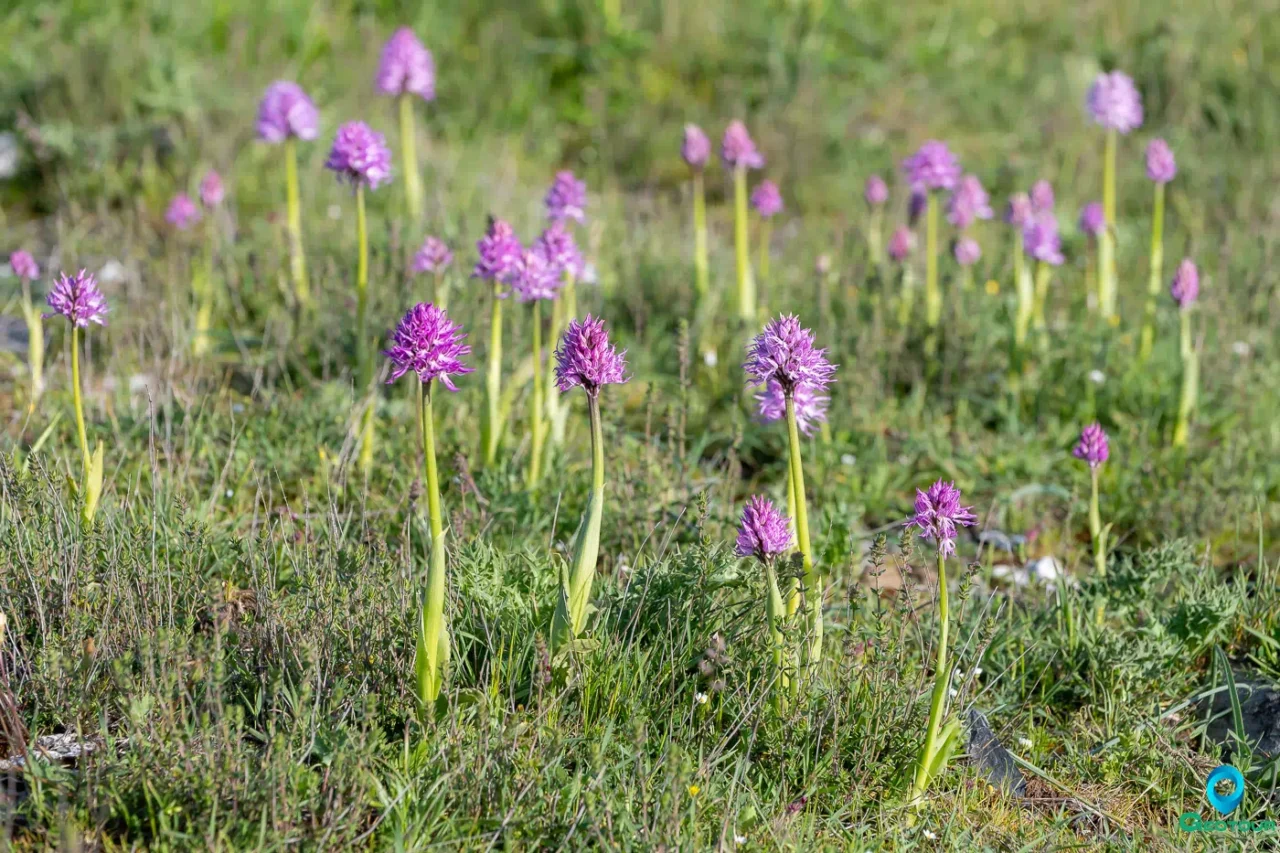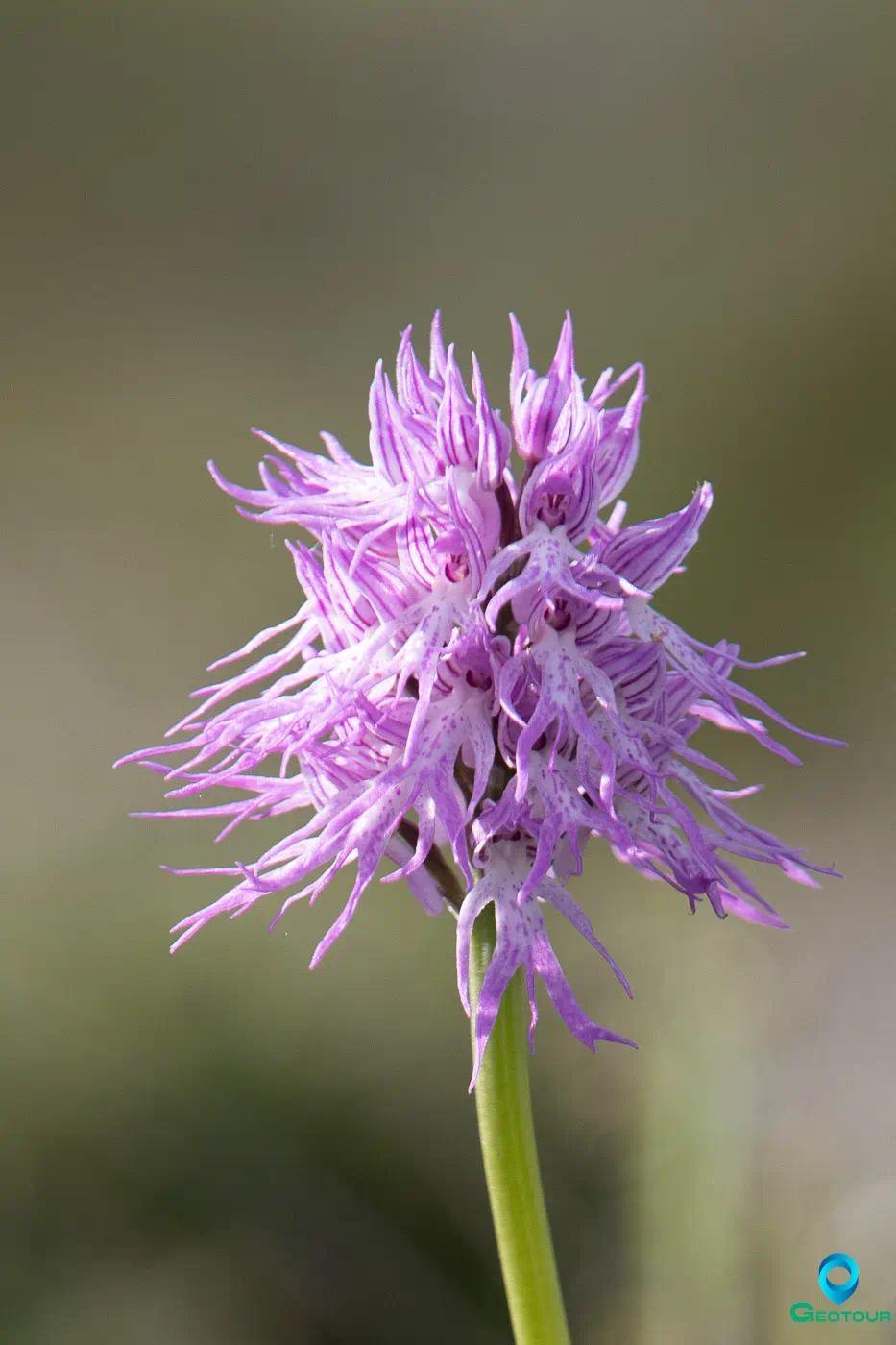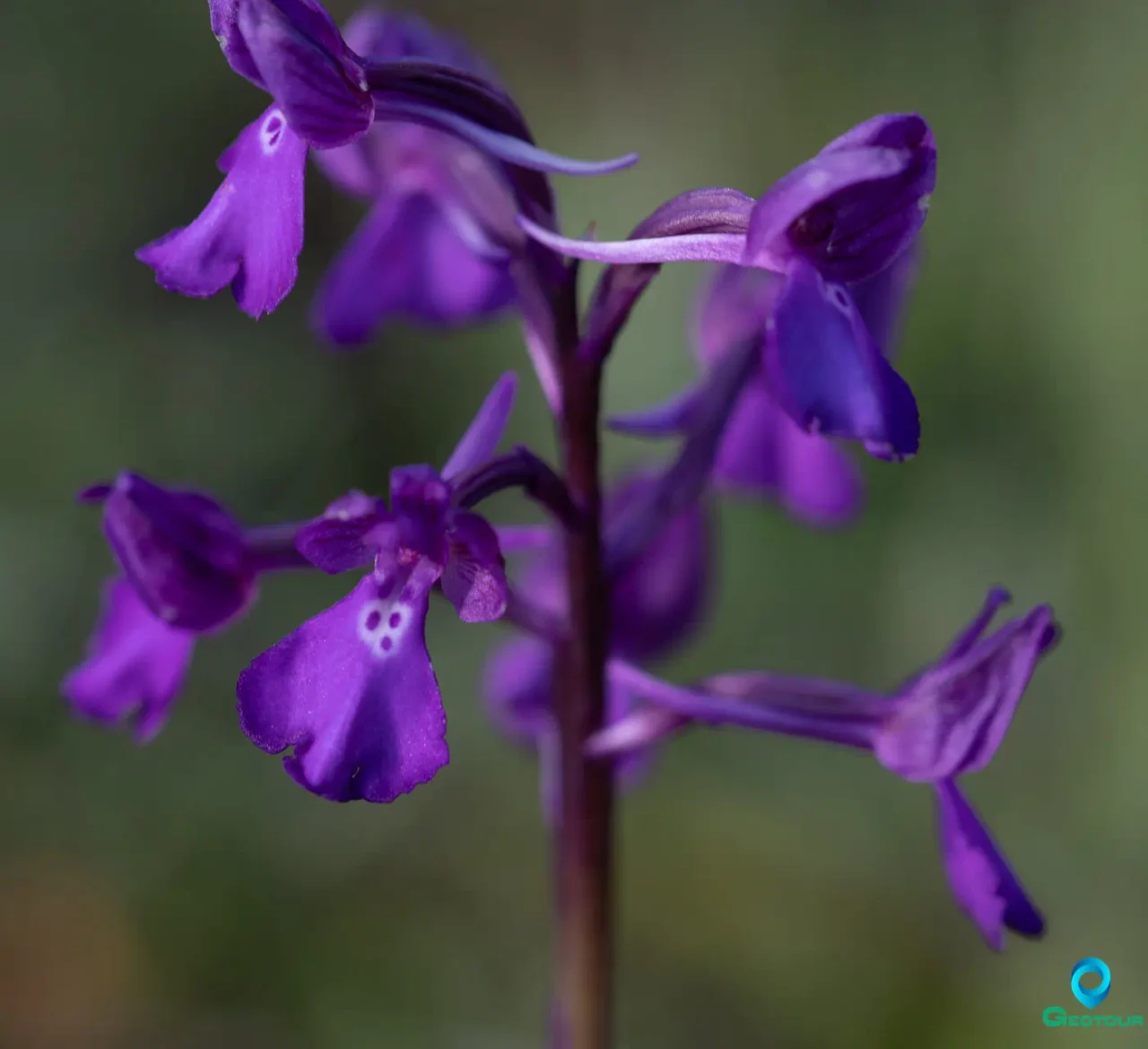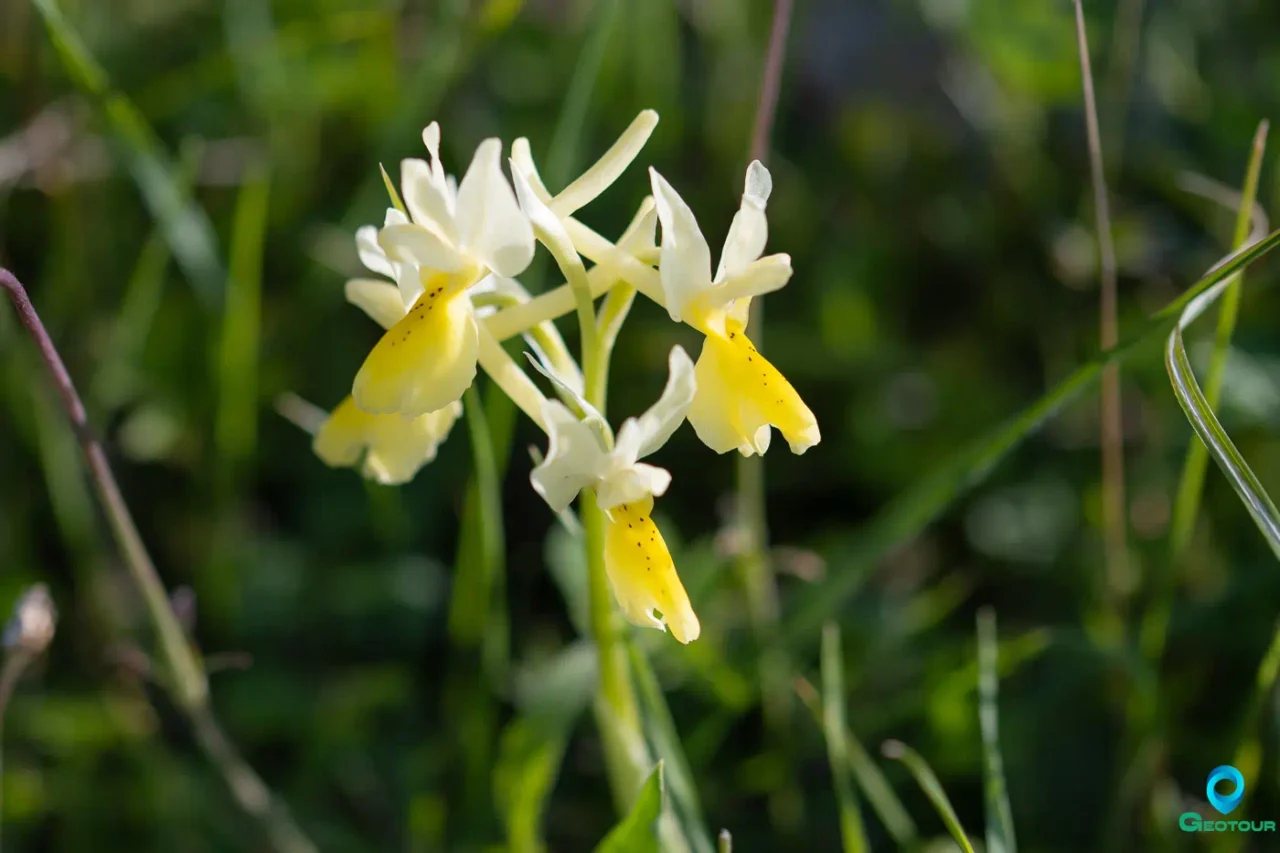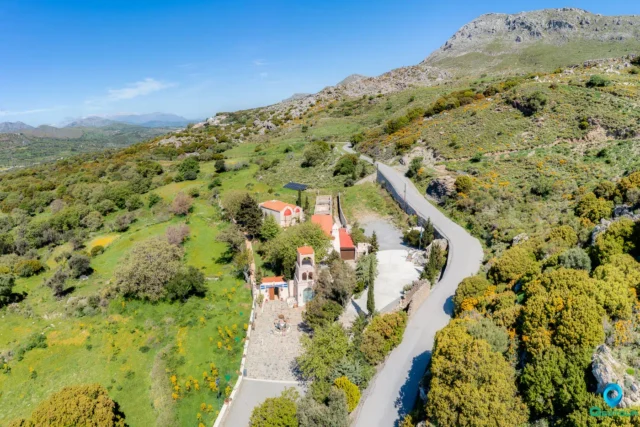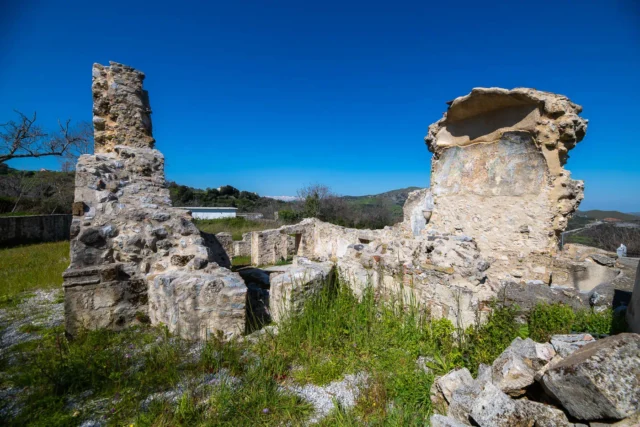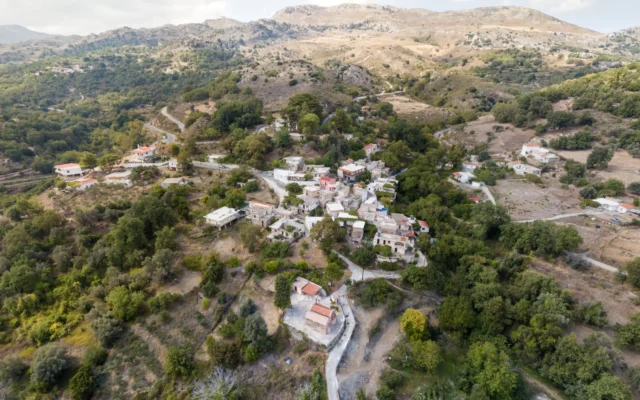Gious Kampos is a small but ecologically significant high-altitude plateau located within the Amari Valley administrative area, part of the Rethymno regional unit on the island of Crete, Greece. Situated approximately 31 kilometers southeast of the city of Rethymno, it occupies a distinct geographical position on the northwestern flanks of the imposing Mount Kentros massif. Covering an area of roughly 2.5 square kilometers, the plateau rests at an average elevation of 750 meters above sea level. While modest in size, Gious Kampos represents a critical area for biodiversity, particularly renowned for its unique spring flora, and holds considerable importance for local agriculture and pastoralism. Its character is shaped by its specific geology, hydrology, and long history of human interaction within the context of the surrounding mountainous landscape.
Geographical Context, Topography, and Access
Gious Kampos occupies a strategic position between the expansive Amari Valley to its east and the large village of Spili to its west. It serves as a natural transition zone leading towards the higher slopes of Mount Kentros (peak altitude 1776m), which dominates the landscape to the southeast. The plateau itself is a relatively flat expanse, contrasting with the rugged surrounding terrain. Its formation and characteristics are intrinsically linked to the broader geology and geomorphology of the Kedros range.
Water draining from the plateau contributes to streams that feed into nearby hydrological systems, including the rivers flowing through the Kissos Gorge (Kissano Gorge) and the Agia Fotia Gorge, both located in close proximity. These gorges carve paths down towards the lower elevations, eventually reaching the southern coast or joining larger river systems.
Access to Gious Kampos is facilitated by paved roads connecting it to the main road network of central Crete. It can be reached via routes passing through several traditional villages, including Spili, Kissos, Gerakari, and Patsos. This accessibility makes it a popular destination, particularly during the spring months, for visitors interested in its natural phenomena. Its location also places it within reach of other regional points of interest, such as the Potamon Dam reservoir, the wider network of villages within the Amari Valley, and the southern coastal areas around Agia Galini.
Geology and Hydrology: Foundations of Fertility and Flora
The geological substrate of Gious Kampos plays a crucial role in shaping its landscape, soil fertility, and unique ecological characteristics. The plateau is primarily formed upon clayey rocks associated with the Vatos geological unit. Interspersed within this clay base are outcrops of limestone belonging to the Pindos and Tripolis geological zones, typical of the broader Cretan nappe structure.
This specific combination of relatively impermeable clay layers with porous limestone sections influences the plateau’s hydrology significantly. The clay base helps retain moisture, allowing for the persistence of a small stream or significant soil moisture throughout much of the year, even during the drier Mediterranean summer months. This reliable water availability, combined with the nutrients derived from the weathering of both rock types, contributes to the plateau’s notable fertility. The geological composition directly supports the specific requirements of the unique plant communities found here, particularly the endemic tulips and various orchid species that thrive in these conditions.
Etymology and Nomenclature: Interpreting the Name
The name “Gious Kampos” (Γιούς Κάμπος) lends itself to interpretation, with two primary theories regarding its origin. The most widely cited explanation connects the name to ancient Greek mythology. It is suggested that the name derives from the local Cretan dialect phrase “τση Γιούς ο Κάμπος” (tsi Gious o Kampos), meaning “the Plain of Eos.” Eos (Ηώς) was the Greek goddess of the dawn, and this name might reflect the spectacular sunrises visible across the plateau from the surrounding slopes or the vibrant colours of the spring bloom evoking dawn’s hues.
An alternative etymology, also grounded in local dialect and land use, suggests the name might relate to pastoral activity. The plateau is sometimes referred to locally as “stsi Aigidous – Gidous” (στση Αιγιδούς – Γιδούς). Given that ‘aiga’ or ‘gida’ means ‘goat’ in Greek, this name could translate roughly as “the Plain of the Goats,” referencing the long history of goat and sheep grazing on the plateau, potentially dating back to the Byzantine period or earlier. Both interpretations offer plausible connections to the plateau’s characteristics – its visual aspect and its traditional use.
Biodiversity: A Floral Hotspot
The single most defining characteristic of Gious Kampos, and the primary reason for its recognition and protection, is its extraordinary plant biodiversity, particularly evident during the spring flowering season from late March through May.
Tulipa doerfleri: The Endemic Red Tulip
Gious Kampos holds the distinction of being the principal habitat, and possibly the only remaining natural habitat globally, for the endemic Cretan red tulip, Tulipa doerfleri. This species is unique to Crete and finds its optimal growing conditions on this specific plateau. During its peak blooming period, typically in April, these tulips can flower in immense numbers, creating striking deep red carpets across sections of the plateau. The visual impact is remarkable and draws visitors and botanists from across Europe. Recognizing its rarity and restricted distribution, Tulipa doerfleri has been protected under Greek law by presidential decree since 1981, making its conservation a priority.
Orchidaceae Diversity: A Concentration of Species
Gious Kampos is recognized for supporting a high diversity and density of terrestrial orchids, with peak flowering occurring during the spring. Orchid genera commonly found in Gious Kampos include:
- Orchis: Representatives of this genus are frequently encountered, contributing notably to the spring bloom. Flower colours within this group on the plateau range from pinks and purples to yellows, often forming noticeable populations.
- Neotinea: This genus is also recorded on the plateau, typically contributing species with pinkish-purple flowers to the local flora.
- Anacamptis: Species belonging to this genus are present, including types known for their dense, pyramid-shaped flower heads, as well as other forms bearing typically robust purple or pink flowers.
- Ophrys: Commonly known as bee orchids, various species of this genus occur in the area. Ophrys are characterized by complex flower structures, often involving mimicry to attract specific insect pollinators. The genus is represented here by both species endemic to Crete and others widespread in the Mediterranean region.
The presence and variety of these orchid genera establish Gious Kampos as an important site for the study and observation of the Orchidaceae family within the Cretan environment.
Other Flora and Vegetation Communities
Beyond the headline species, the plateau supports characteristic Mediterranean vegetation communities. Open grassy areas are interspersed with phrygana – low, drought-tolerant scrub dominated by aromatic plants like thyme, sage, and thorny burnet. We can also find other trees, such as plane trees (Platanus orientalis), which are typically associated with the moister areas near the stream or springs like the nearby Agios Ioannis spring. Cultivated trees, discussed under agriculture, also contribute to the landscape mosaic. Numerous other bulbs, anemones, irises, and annual wildflowers add to the diversity during the spring bloom.
Ecological Significance and Conservation Status
The combination of unique geology, hydrology, and resulting biodiversity confers significant ecological importance upon Gious Kampos. Its role as the primary habitat for the globally rare Tulipa doerfleri alone marks it as critical for conservation. Furthermore, the high diversity and density of orchids indicate a relatively healthy ecosystem with the necessary fungal associations and pollinator populations required for these specialized plants.
Recognizing this importance, Gious Kampos is designated as a protected area within the European Union’s Natura 2000 network, listed under site code GR4330006, which likely encompasses a larger area, including parts of Mount Kedros and surrounding habitats. This status aims to ensure the conservation of its valuable habitats and species. Potential threats could include changes in traditional land management practices (either intensification or abandonment of grazing/agriculture), localized tourism pressure during peak season, and the broader impacts of climate change on sensitive high-altitude ecosystems and specialized plant species. Continued monitoring and appropriate management are essential for preserving its unique ecological integrity.
Human Interaction: Agriculture and Pastoralism
Gious Kampos is not merely a wild landscape; it has a long history of human use, primarily for agriculture and animal husbandry, owing to its fertility.
Historical Significance
In past centuries, the plateau served as a vital source of sustenance for the populations of the surrounding villages. The reliable production of cereals and vegetables from the plateau contributed significantly to local food security in a region often characterized by challenging mountain farming conditions.
Contemporary Agricultural Use
The fertility of Gious Kampos continues to be utilized today. The plateau supports the cultivation of various crops, including:
- Cereals: Different types are grown, taking advantage of the flat terrain and fertile soil.
- Vegetables and Greens: A variety of market garden produce (‘κηπευτικά’, ‘λαχανικά’) known locally for its quality and taste.
- Fruit Trees: Orchards producing cherries (‘κερασιές’), apples (‘μηλιές’), sour cherries (‘βυσσινιές’), and walnuts (‘καρυδιές’) are present, adding to the agricultural diversity.
Alongside cultivation, pastoralism remains a significant activity. Numerous flocks of sheep and goats graze on the plateau’s pastures, continuing a tradition potentially linked to one of the proposed origins of its name. This grazing, if managed sustainably, can play a role in maintaining the open habitats favoured by many wildflowers, although overgrazing could pose a threat.
VISITOR NOTICE: Please protect the unique wildflowers of Gious Kampos. Many species here, including the rare tulips and orchids, are protected by law. Cutting or picking flowers is strictly prohibited. Admire their beauty and leave them for everyone to enjoy.

